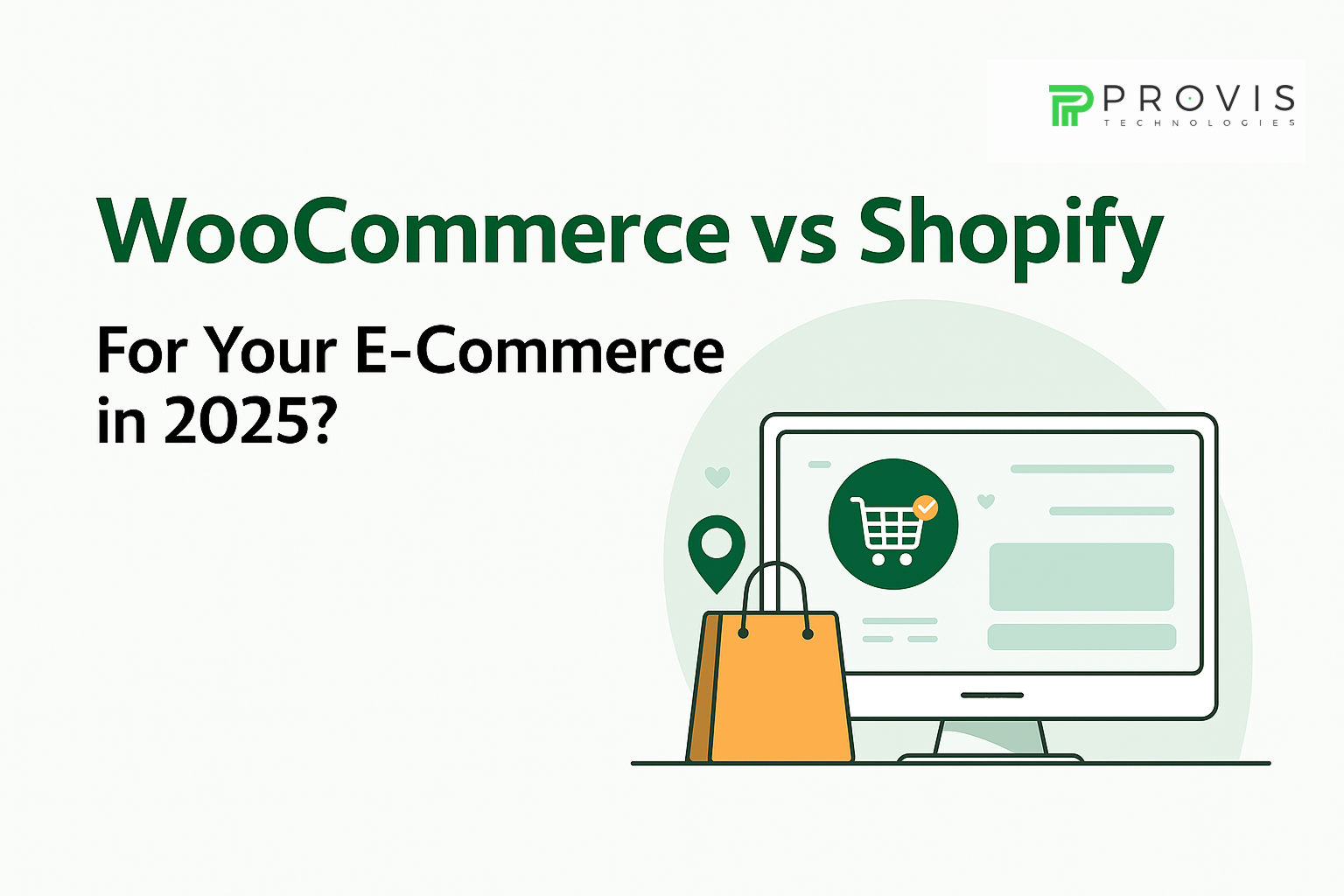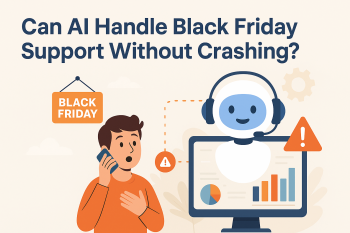Choosing the right e-commerce platform in 2025 isn’t just about launch speed or design — it’s about aligning your tech with your long-term vision. Whether you’re a lean startup scaling fast or a seasoned brand considering platform migration, understanding the strengths of WooCommerce vs Shopify is crucial. In this post, we dig deep into pricing, flexibility, performance, and scalability — with up-to-date insights, real stats, and actionable comparisons.
Quick Stats (2025)
Shopify powers 4.8M+ live websites
Source: BuiltWith, 2025
WooCommerce holds 36% of the top eCommerce market
Source: W3Techs, Jan 2025
Average Shopify user pays $99–$399/month (+ transaction fees)
Source: Shopify Pricing, 2025
WooCommerce can save up to 40% in long-term costs
Source: Kinsta WooCommerce Performance Report, 2024
Performance & Scalability
Scalability & Handling Traffic Growth
If you’re running flash sales, product drops, or seasonal campaigns, Shopify’s cloud infrastructure is a plug-and-play solution. It auto-adjusts server load to accommodate sudden traffic surges without technical hiccups.
On the other hand, WooCommerce provides that same scalability potential — if configured correctly. Hosting on platforms like Kinsta, SiteGround, or Cloudways with a fine-tuned caching system can bring WooCommerce to enterprise-level performance.
For brands that want to scale with full control over their stack, WooCommerce is like an open highway. For those who want to set it and forget it — Shopify is a smooth ride.
Website Speed & Loading Times
Speed isn’t just a vanity metric anymore. It’s one of the key pillars of conversion and user experience.
Shopify includes a global CDN, image optimization, and built-in caching, meaning you’re almost guaranteed a snappy load time.
WooCommerce’s performance depends on your setup: themes, plugins, hosting, and caching tools all play a role. Brands that invest in speed optimization see impressive results — but it takes effort.
Marketing & Promotional Tools
Shopify is all about rapid deployment. Its ecosystem includes apps for:
Abandoned cart recovery
Email marketing campaigns
Upselling & cross-selling
Discounts & loyalty programs
WooCommerce, through WordPress, opens the door to marketing creativity. Use tools like MailPoet, AutomateWoo, or FunnelKit to build unique, automated campaigns that truly reflect your brand voice.
If your brand is marketing-heavy and growth-driven, WooCommerce’s flexibility could be your superpower.
Customer Support & Assistance
Shopify’s 24/7 support is a huge draw for solo founders and lean teams. Their support team can assist via phone, chat, and email — and the Shopify community is extensive.
WooCommerce support comes through a mix of plugin developers, hosting providers, and your internal/external dev team. If you’ve got a reliable tech partner (Provis Technologies!), this route offers more freedom but requires coordination.
Integration Capabilities
Third-party Integrations & APIs
Shopify’s app ecosystem is robust — you’ll find almost every major CRM, shipping tool, and sales platform with direct plugins. For custom integrations, Shopify Plus offers API access and headless commerce options, though with limitations.
WooCommerce, being open-source, plays well with everything from Zapier automations to ERPs, CRMs, and advanced marketing systems. If your operations are complex or require tailored systems, WooCommerce can be adapted in ways Shopify can’t.
Compatibility with Existing Systems
If your current setup includes WordPress, custom ERPs, or legacy systems, WooCommerce feels like a natural evolution. Shopify integrations are streamlined but often come at an additional cost or require middleware.
Bottom Line: Which Platform Should You Choose in 2025?
There’s no one-size-fits-all — but here’s the quick cheat sheet:
Use Shopify if:
You want a fast, simple setup, world-class support, and don’t mind paying a bit more for convenience.
Use WooCommerce if:
You want customization, total control, lower long-term costs, and already have (or are hiring) tech help.
WooCommerce vs Shopify in 2025: Feature Breakdown
| Features | WooCommerce | Shopify |
| Ease of Use | Requires setup, dev-friendly | Beginner-friendly |
| Customization | Fully flexible | Limited w/o Shopify Plus |
| SEO Performance | WordPress-powered SEO tools | Controlled URL structures |
| Design Freedom | 100% custom | Template-based |
| Long Term Cost | Pay for what you need | Subscriptions + app fees |
| Ownership | You own everything | Shopify owns hosting/data infra |
Written By
Author's Picks
- AI-Powered Predictive Analysis: What It Means for E-commerce Development
- 07/11/2024
- Top Ways to Succeed in E-commerce How should you establish successful e-commerce for your offline business?
- 01/03/2024
- Top Reasons Why WooCommerce is One of the Best E-commerce Platforms
- 15/03/2024
Categories
- AI for Startups
- AI in Web Development
- AI Integration
- AI Platforms
- AI Prompt
- AI Tools
- AI Trading Software
- Android App
- Android vs iOS Development
- Angular
- API
- API Development
- App
- app development
- App Idea
- App User Feedback
- Application
- Artificial Intelligence
- Audit Services
- Automotive Industry
- Awards and Recognition
- Business Consulting
- Business Website
- Chatbots
- CRM
- CRM for Financial Advisors
- Custom CRM
- Custom SaaS
- Custom Website
- Customer Service
- dashboard design
- Developing a Mobile App
- Digital Business
- E-commerce
- EMR Integration
- Finance
- Financial Advisors
- Financial Advisors
- GIT
- Health Insurance
- iOS App
- iOS App Development
- IoT Mobile App Development
- IoT Platforms
- IT Audit Services
- IT Consulting
- IT Strategies
- Java Development
- Laravel
- Lean Canvas
- Learning Management System
- Logistics Apps
- Mobile App Development
- MVP
- Native App
- News Aggregator Site
- OTT
- Outsourcing IT
- Payment Gateway
- predictive analysis
- Product Launch Strategy
- Progressive Web App (PWA)
- Prototype
- Recommender Systems
- Ruby
- SaaS
- SaaS Application
- SaaS Business
- SaaS Company
- SaaS Development
- SaaS Product
- SaaS Project
- Sales Funnel
- SEO
- Shopping Cart
- Software Development
- SSL and TLS
- Startup Checklist
- Technology
- Tetradic Color Scheme
- UI/UX Design Company
- Unit Testing
- User Flow
- User Testing
- Web Development
- Web Performance Optimization
- website Maintenance Services
- Website Migration Service
- Website Speed Optimization
- WooCommerce
- WordPress





